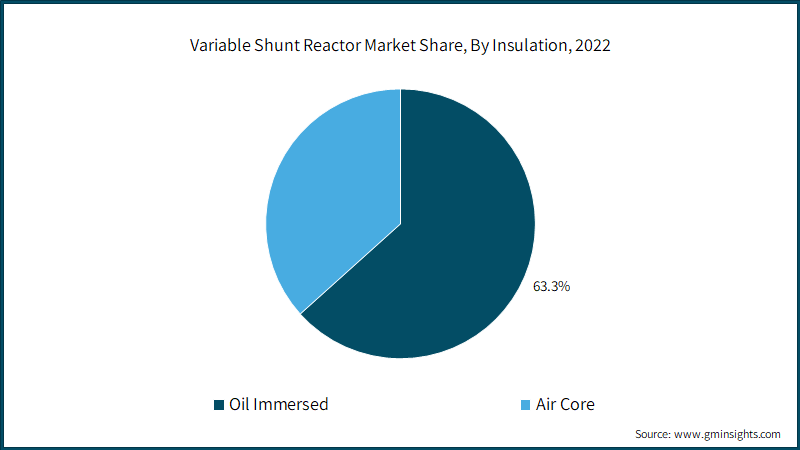Home > Energy & Power > Electrical Equipment > Shunt Reactors > Variable Shunt Reactor Market
Variable Shunt Reactor Market Analysis
- Report ID: GMI7010
- Published Date: Oct 2023
- Report Format: PDF
Variable Shunt Reactor Market Analysis
Based on Phase configuration, the three-phase shunt reactor market is projected to witness 9% growth rate from 2023 to 2032. This growth is attributed to the increasing demand for these reactors in compensating for reactive power within standard three-phase power systems that underpin most electricity transmission and distribution networks. As power grids expand and new transmission lines are deployed to meet this surging demand, the vital role of shunt reactors in reactive power compensation becomes more evident.

Oil immersed variable reactors market was worth USD 490 million in 2022 and is anticipated to reach USD 1.1 billion by 2032. Oil-immersed variable shunt reactors play a pivotal role in maintaining grid stability by providing reactive power compensation. As renewable energy sources like wind and solar power become more integrated into the grid, these reactors aid in mitigating voltage fluctuations and ensuring a reliable power supply. Moreover, infrastructural development and grid modernization initiatives worldwide are bolstering the demand for oil-immersed shunt reactors as essential components in upgrading power systems. Their ability to enhance grid reliability, stabilize voltage profiles, and reduce losses makes them a crucial asset in the evolving energy landscape.
Variable shunt reactors find applications across various sectors, including electric utility and renewable energy. The variable shunt reactor industry is experiencing significant growth propelled by the renewable energy sector. As the world transitions towards cleaner and more sustainable energy sources, renewable energy installations such as wind farms and solar power facilities are rapidly expanding. Variable shunt reactors play a vital role in maintaining grid stability when integrating intermittent renewable energy sources.

Asia Pacific variable shunt reactor market is slated to register gains at nearly 9.5% up to 2032, owing to the region's rapid economic growth and urbanization which have led to increased electricity demand, putting pressure on power transmission and distribution networks. To ensure a reliable and stable power supply, utilities are investing in grid infrastructure improvements, including the deployment of variable shunt reactors. Additionally, the Asia Pacific region is characterized by a growing focus on renewable energy integration, with countries like China and India leading in renewable capacity expansion.

